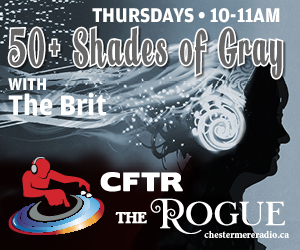In the beginning, man invented beer, and it was good. Sure, there were a few kinks they had to work out. The first two ingredients were grain and water. After some soggy grain was spontaneously fermented by airborne yeast, the first accidental beermaker thought he might be onto something.
Hops came along much later, and yeast was not discovered as the catalyst of fermentation until thousands of years later.
For centuries, all beers were dark and cloudy, made with whatever grains were available, and fermented by whatever airborne yeasts happened to be floating by.
This made quality control pretty hit-or-miss for a long time, and until the antiseptic effects of hops were discovered, beer had a pretty short shelf life, measured in days instead of months.
Near the tail end of the middle ages, 14th-century Bavarian brewers were experimenting with cold-tolerant yeasts, and aging their barrels of beer in chilly caves at the base of the Alps.
This marked the development of lager beer, a giant step away from the ales that had been brewed for thousands of years.
The major difference between ales and lagers is the type of yeast used in the fermentation process. Ales use a yeast that floats on top of the brewing mixture, and ferments over a period of a few days at a temperature of 15 to 25 degrees.
Lagers, on the other hand, use a yeast that sinks to the bottom of the brewing cask, and ferments over a period of several weeks at the relatively cool temperature of 7 to 12 degrees.
Lagers are then given a secondary fermentation by storing them for several months at around zero degrees celsius. Those pioneering Bavarian brewers named this new style lagerbier, after the German word lagern, which meant “to store”.
Today, we think of lager beers are light in color, and light in taste, much like a Budweiser or Labatt Blue.
However, the very first lager beer was dark and cloudy, looking nothing like the light lagers of today. That very first proto-lager was named Münchener Dunkel, or Munich Dark for the non-teutonic readers in the audience.
Both ales and lagers remained dark and cloudy affairs until Bohemian brewers developed pale barley malt in 1842. The modern-day Czech town of Pilsen was the epicenter of brewing with pale malts, which led to the incredibly popular Pilsener style of beer, paving the way for light lagers to be enjoyed all over the world.
Lagers took a while to catch on, as the commercial breweries of the day much preferred cranking out a batch of ales every few days, instead of the several months required for a lager. Eventually, modern refrigeration technology advanced to the point where a batch of lager could be aged for as little as a few weeks, making it more attractive to the major brewers.
The chief attraction of a lager beer is a much lighter and refreshing taste than a more traditional ale beer. Lager beers tend to be lighter in color, and usually employ grains other than barley in the malting process. The lighter, less malty flavor of lager beers makes them easier to drink, and more attractive to a larger segment of the beer drinking public.
As a duly registered beer snob, your intrepid liquor reporter is legally required to prefer ales to lagers, but there is one style of lager that I will make an exception for.
Yes, gentle reader, that original proto-lager, made centuries ago by cutting-edge Bavarian brewers is still produced today, and your humble narrator can’t get enough of the Münchener Dunkel style of beer.
Fortunately, German beers are widely available here in Alberta, and the dunkel style is no exception. The easiest to find is the Warsteiner Premium Dunkel, which should be described as more coppery red in color than actually dark, but the heady malt grains with molasses undertones acquit this brew nicely.
If you can get wrap your head around the tongue-twisting name, the Hacker-Pschorr Dunkel is another popular brand in the Canadian market, available at well-stocked booze merchants near you. Pouring a deep chestnut brown into the glass, this beer makes me feel like I am sitting in an old-timey Bavarian Lodge with an oom-pah band playing in the bar. True to style, there is very little hop bitterness, but plenty of caramel malts and subtle hints of cocoa. Perfect for pairing with a pretzel dipped in grainy mustard!
If you would like to try the granddaddy of all lager beers, ask for a dunkel at your friendly neighbourhood booze merchant!






